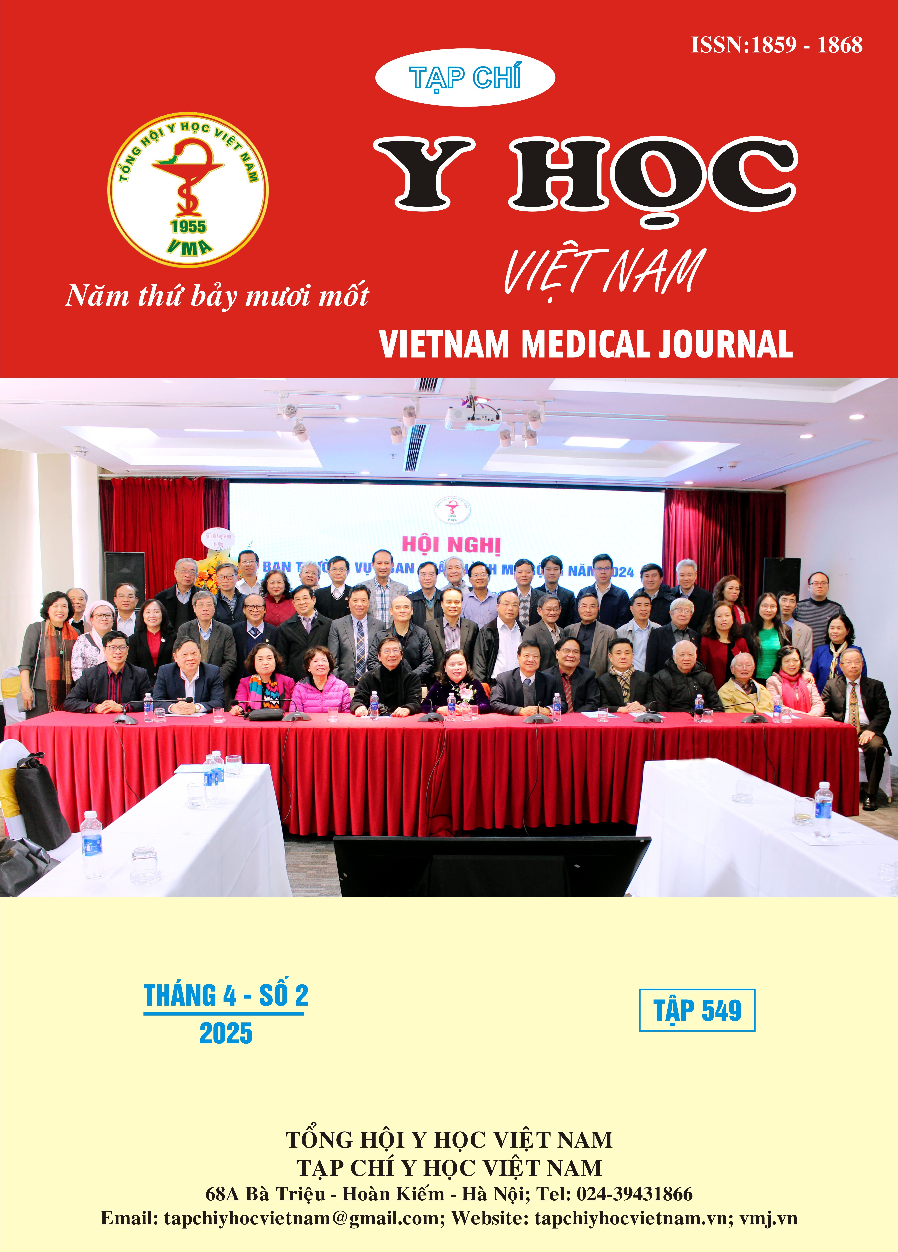KHẢO SÁT NỒNG ĐỘ IGF-1 HUYẾT TƯƠNG VÀ MỘT SỐ YẾU TỐ LIÊN QUAN Ở BỆNH NHÂN BỆNH THẬN MẠN GIAI ĐOẠN CUỐI ĐANG LỌC MÁU CHU KỲ
Nội dung chính của bài viết
Tóm tắt
Đặt vấn đề: yếu tố tăng trưởng giống insulin 1(IGF-1) còn được gọi là somatomedin C, là một hormone có cấu trúc tương tự insulin, được gan tiết ra để đáp ứng với nội tiết tăng trưởng (growth hormone – GH) do tuyến yên sản xuất. IGF-1 có vai trò quan trọng trong việc phát triển về cấu trúc và chức năng của các tế bào trong cơ thể. Ở bệnh nhân suy thận mạn giai đoạn cuối, đặc biệt là những người đang điều trị bằng phương pháp thận nhân tạo lọc máu chu kỳ, nồng độ IGF-1 thường bị rối loạn, góp phần vào nhiều biến chứng nghiêm trọng như suy dinh dưỡng, viêm mạn tính và rối loạn chuyển hóa. Mục tiêu nghiên cứu: khảo sát nồng độ nồng độ IGF-1 huyết tương và mối liên quan giữa nồng độ IGF-1 huyết tương với một số yếu tố ở bệnh nhân bệnh thận mạn giai đoạn cuối đang lọc máu chu kỳ. Đối tượng và phương pháp nghiên cứu: nghiên cứu mô tả cắt ngang, chọn mẫu ngẫu nhiên 158 bệnh nhân bệnh thận mạn giai đoạn cuối đang lọc máu chu kỳ tại bệnh viện Đa khoa Thành phố Cần Thơ từ tháng 8/2023 đến tháng 1/2025. Kết quả: bệnh nhân có độ tuổi trung bình 54,1 ± 13,4, nam giới chiếm 44,3%, chỉ số BMI trung bình 19,21 ± 1,28 kg/m2, thời gian mắc bệnh trung bình 75,26 ± 23,9 tháng, thời gian lọc máu trung bình 69,41 ± 23,8 tháng. Nồng độ IGF-1 huyết tương 116,1 ng/ml, nồng độ cao nhất là 361,7 ng/ml và nồng độ thấp nhất là 30,5 ng/ml. Có mối liên quan giữa nồng độ IGF-1 huyết tương với một số yếu tố: BMI (OR=5,27 (2,25-12,345), p <0,001), nồng độ albumin máu (OR=10,768 (4,495-25,794), p <0,001) và nồng độ PTH máu (OR=4,172 (0,985-17,68), p=0,038), không có mối liên quan với thời gian lọc máu (OR=1,375 (0,629-3,005), p=0,423) và yếu tố viêm CRPhs trong cơ thể (OR=1,16 (0,538-2,5), p=0,705). Kết luận: có mối liên quan giữa sự giảm nồng độ IGF-1 huyết tương với tình trạng dinh dưỡng (BMI, albumin máu) và nồng độ PTH máu.
Chi tiết bài viết
Từ khóa
bệnh thận mạn giai đoạn cuối lọc máu chu kỳ, nồng độ IGF-1 huyết tương
Tài liệu tham khảo
2. Võ Thanh Hùng, Nghiên cứu tình trạng suy dinh dưỡng và nồng độ leptin huyết thanh ở bệnh nhân bệnh thận mạn đang lọc máu chu kỳ và lọc màng bụng liên tục ngoại, Đại học Y Dược Huế, 2020, trang 78.
3. Nguyễn Văn Thanh, Đặng Thị Việt Hà, Đỗ Gia Tuyển và Bùi Thị Quỳnh (2016), Tình trạng suy dinh dưỡng theo bảng điểm SGA ở bệnh nhân bệnh thận mạn giai đoạn cuối chưa điều trị thay thế, Tạp chí Y học Việt Nam, tr. 359 – 363.
4. Tonshoff B, Blum WF, Wingen AM, Mehls O, Serum insulin-like growth factors (IGFs) and IGF binding proteins 1, 2, and 3 in children with chronic renal failure: relationship to height and glomerular filtration rate. The European Study Group for Nutritional Treatment of Chronic Renal Failure in Childhood, J Clin Endocrinol Metab,1995, 80.9: 2684 –2691.
5. Sanzia Francisca Ferraz et al, Nutritional status and interdialytic weight gain of chronic hemodialysis patients, Nutritional status and interdialytic weight gain, 2014, pp.1-25.
6. Beberashvili Ilia et al, Decreased IGF-1 levels potentiate association of inflammation with all-cause and cardiovascular mortality in prevalent hemodialysis patients, Growth Hormone & IGF Research , 2013, 23.6: 209-214.
7. Nakaya Rino et al, Associations of Serum Insulin-Like Growth Factor 1 with New Cardiovascular Events and Subsequent Death in Hemodialysis Patients, Journal of Atherosclerosis and Thrombosis, 2022, 29(8), 1153-1165.
8. Vaisilkova Volha N et al, Association between serum insulin like growth factor-1 (IGF-1) and insulin-like growth factor-binding protein-3 levels and chronic kidney disease in diabetic patients, Journal of Renal Injury Prevention, 2020, 10.1: e05-e05.


